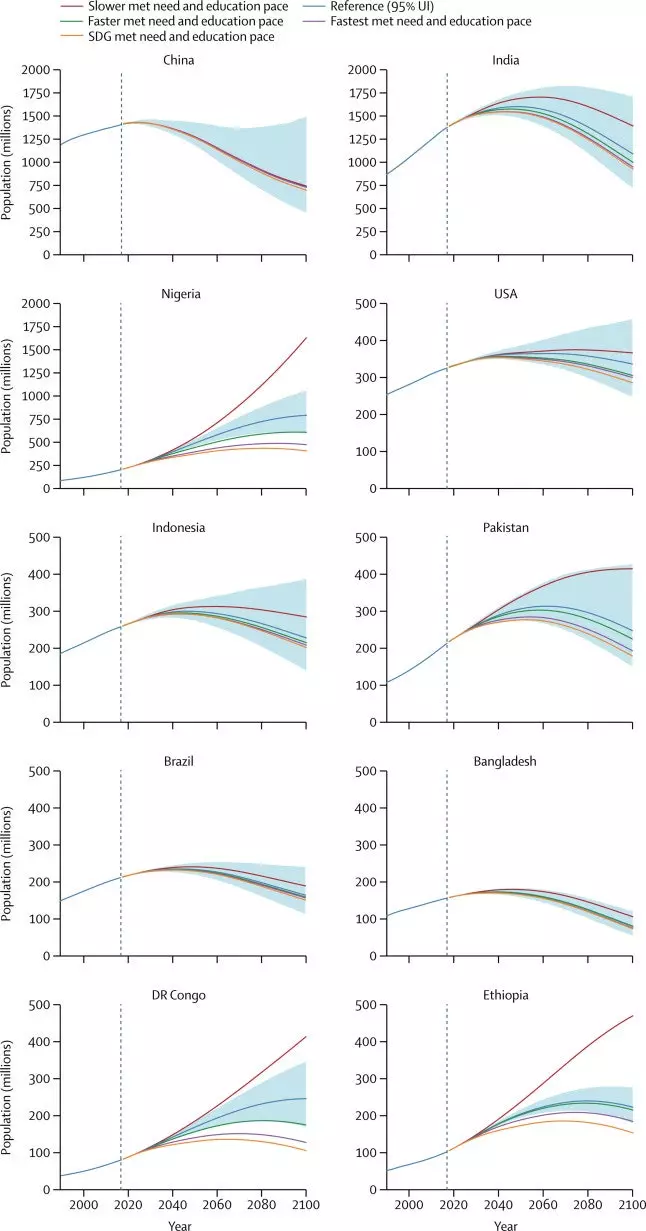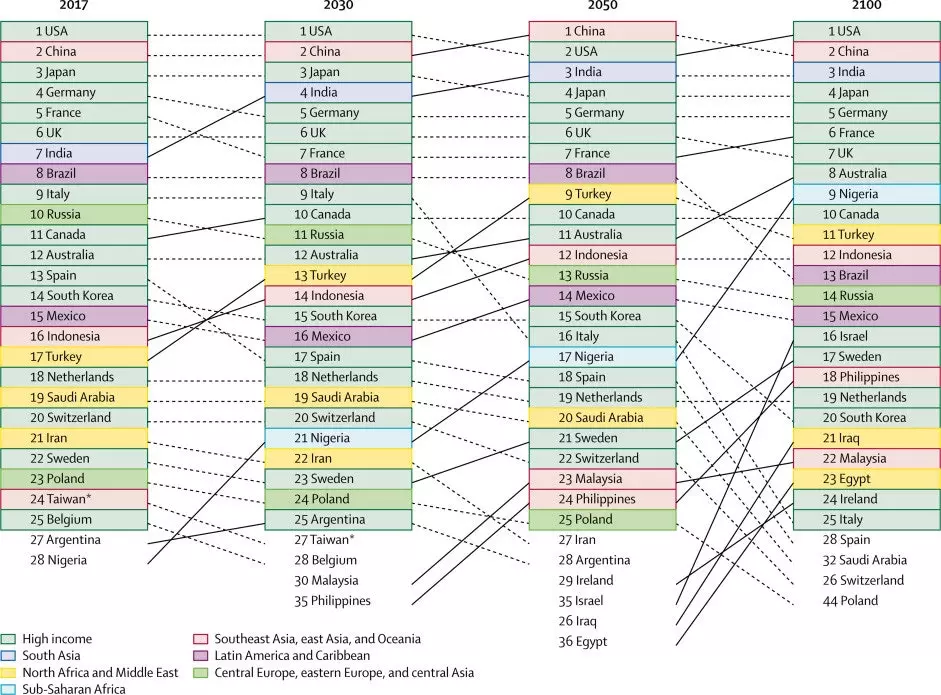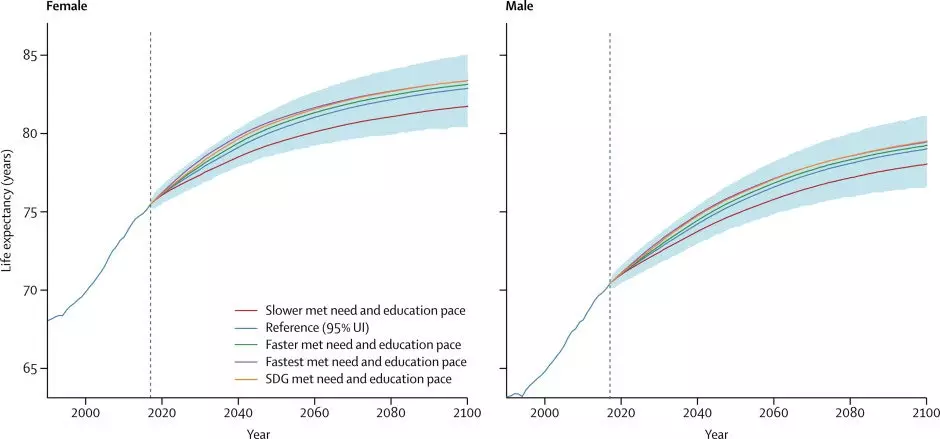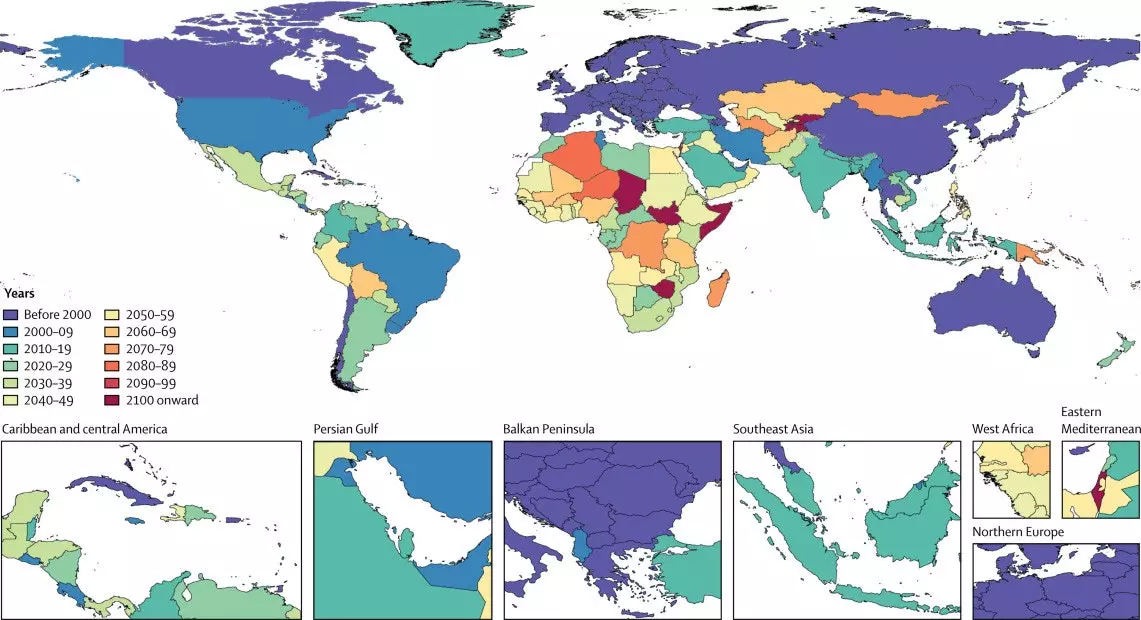
What will the planet be like in 2100?
If a year ago we told you that in 2100 the world would reach 11,200 million inhabitants, according to UN data, now we tell you that it may not be so. **A new study by The Lancet corrects the UN data and gives a new twist to what will be the demographic and economic panorama of the planet. **
According to the study ‘Fertility, mortality, migration and population scenarios for 195 countries and territories from 2017 to 2100’ , published on July 14, 2020, the world population will not grow as expected. It will reach its highest point in 2064, with some 9.73 million (today we are more than 7.7 billion people), but will drop to 8.79 million in 2100.
The only regions that will exceed the estimated number of inhabitants will be Sub-Saharan Africa, North Africa, and the Middle East . “Falls are forecast to be most severe in South Asia; Southeast Asia, East Asia and Oceania; and Central Europe, Eastern Europe and Central Asia,” he says.
In 2100 the largest countries in terms of population will be India, Nigeria, China, the United States and Pakistan. . It can be clearly seen in the graph below. The case of Nigeria is quite amazing, its population will grow from 206 million to 790 in 2100.

China will not be the world superpower of 2019.
WHAT WILL HAPPEN WITH SPAIN
In the case of Spain, its population is expected to decrease by 50% , as will the population of Thailand, Japan and Ukraine. Specific, 23 countries will be affected by this population reduction ; and in our case it will go from 46 million (2019) to about 22.91 million inhabitants in 2100.
While our neighbor Portugal will go from a population of 10.68 million in 2019 to 4.50 million in 2100, and Italy will also see its population reduced by 50%, from around 60 million to around 30 million in 2100. **France its population will increase from about 65 million to about 67 million and the United Kingdom will also grow, from about 66 million to 71.45 million inhabitants. **
This will affect our economic growth: from 13th place in world powers in 2017 we will go to 28th in 2100 . The aging of the population and the lack of births would affect the GDP of countries such as Spain and Italy, which will see "challenges" in this regard if they fail to reverse the demographic pyramid.
“Having fewer individuals between the ages of 15 and 64 could have larger effects on GDP growth than what we have captured here. For example, having fewer people in these age groups could reduce innovation in economies, and fewer workers overall could reduce domestic markets for consumer goods, because retirees are less likely to buy consumer durables than older adults. middle aged and young. Developments such as advances in robotics could substantially change the trajectory of GDP per working-age adult , reducing the effect of the age structure on GDP growth. However, these effects are very difficult to model at this stage.
One of the possible solutions, effective in countries like the US, Canada, Australia or New Zealand, would be to incorporate immigration as an economic engine. So says the study: "The optimal strategy for economic growth, fiscal stability and geopolitical security is liberal immigration with effective assimilation into these societies."

The ranking of world superpowers from 2017 to 2100.
FERTILITY, THE FIRST WORLD CHALLENGE
It is evident that the main challenge of the planet will be fertility. The solution passes, according to the Lancet, through one of these scenarios : “try to increase the fertility rate by creating a supportive environment for women to have children and pursue their careers, restrict access to reproductive health services, increase participation in the labor force, especially at older ages, and promote immigration. It is worth considering how each of these options might play out in different countries.”
He gives as an example the policies to support women in Sweden, Singapore or Taiwan in recent years,** but warns that this could be the workhorse of the future**. “There is a very real danger that, in the face of declining populations,** some states may consider adopting policies that restrict women's reproductive health rights and access to services**. Low fertility in these settings could become a major challenge to the advancement of women's freedom and rights."

Life expectancy by sex.
POPULATION AGING
Life expectancy will be greater for women than for men, from 79 years in 2019 we will spend an average of 81 years in 2100.
In 2100 there will be an extremely aged planet, there will be more elderly than young: those over 65 years of age will be around 2,300 million and those under 20, 1,700 million. This will affect the great powers, such as China, above all. (from 1,400 people in 2019 it will go to 731 million in 2100).
Although this can be beneficial for our planet, as the study states. “ Our forecasts for a declining world population have positive implications for the environment, climate change and food production. , but potential negative implications for the workforce, economic growth, and social support systems in parts of the world with the largest decline in fertility.”
However, the report leaves the door open to the possible causes of the population decline, one of which may be the consequences of high temperatures or natural disasters that cause the migration of people. Here you can find more information about the study.

The world population map.
